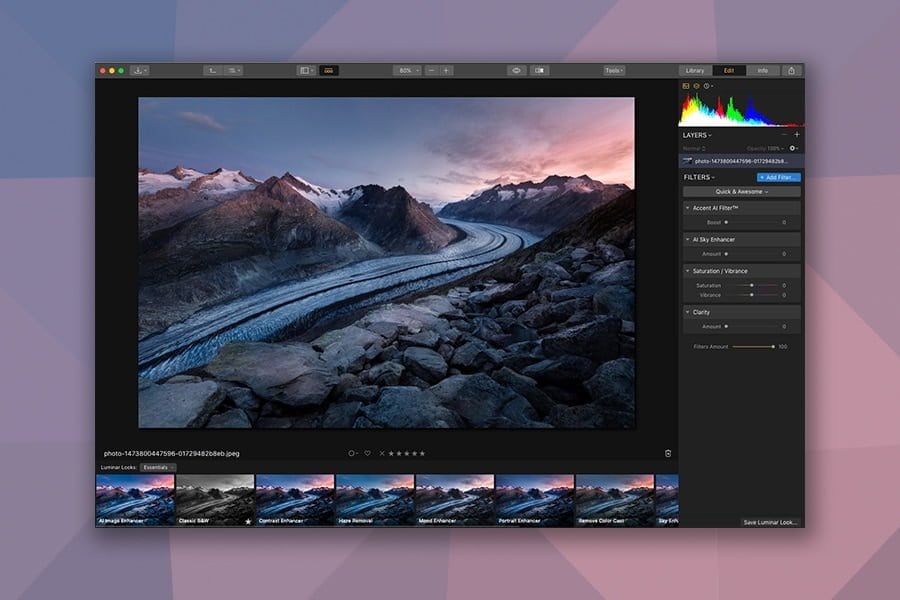
You need a Lightroom alternative if you don’t want to pay for a Lightroom subscription to manage and edit your photos.
Depending on your needs, alternate photo editing software may offer similar file management (DAM) features and RAW image editing tools as Lightroom.
Some tools are desktop-only, while others are online or app-based – perfect if you’re looking for an alternative to the Lightroom Mobile app.
EDITOR’S #1 CHOICE
Similar to Lightroom with powerful AI editing tools to improve images in less time. Affordable one-time-fee (no subscription) and easy for beginners.
Use code shotkit10neo to save $10.
Free Lightroom alternatives also exist, and most of the paid software offers a free trial so you can experiment before you buy.
Adobe lost many users when it removed the option to buy Lightroom outright – now’s your chance to grab an alternative image editing software that’s right for you.
When I tested the most recent versions of each software, I was surprised at just how far the features have come in 2024.
…and the good news is the best options are more affordable than Lightroom.
What is the Best Alternative to Lightroom in 2024?
| Image | Product | Features | ||
|---|---|---|---|---|
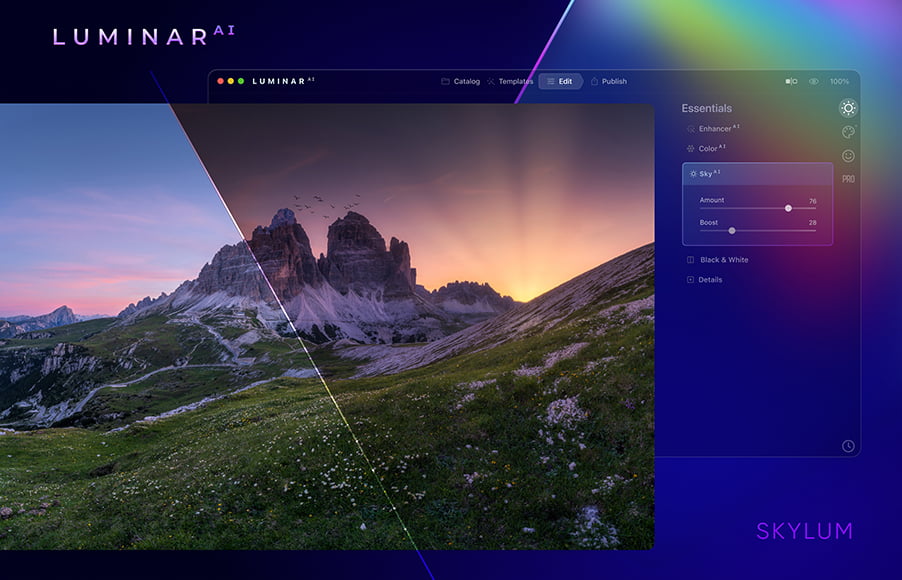 |
Skylum Luminar#1 LIGHTROOM ALTERNATIVE |
|
Our Rating: |
Our Rating: |
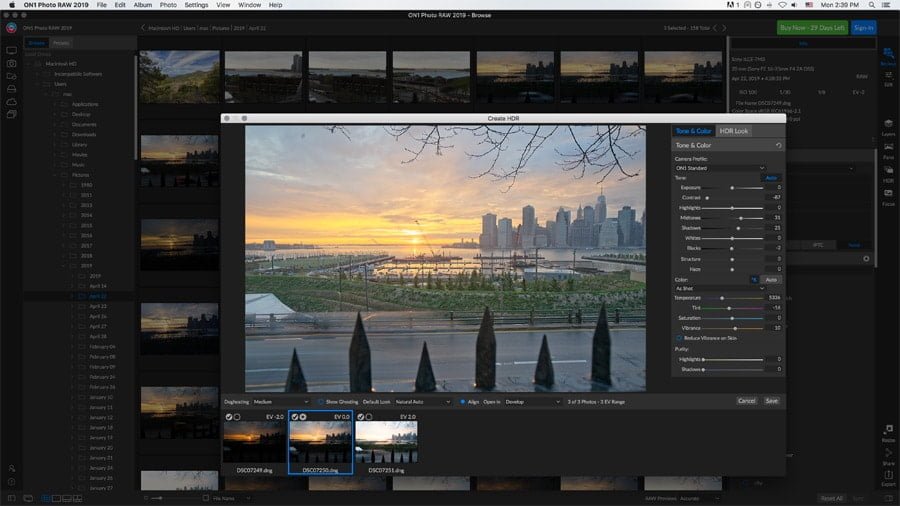 |
On1 Photo RAWHIGHLY RECOMMENDED |
|
Our Rating: |
Our Rating: |
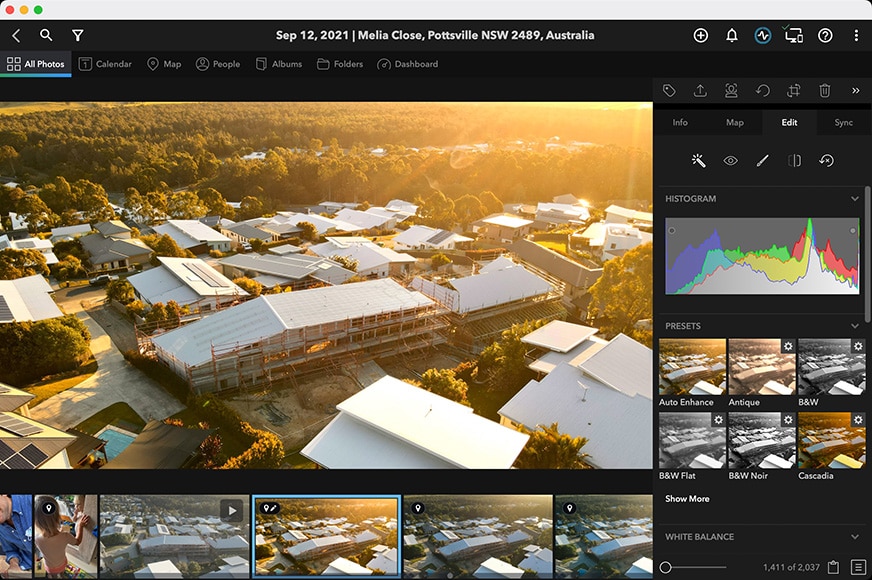 |
Mylio PhotosBEST DAM FOR ORGANISING PHOTOS |
|
Our Rating: |
Our Rating: |
1. Skylum Luminar (Most Popular Lightroom Alternative)
- Affordable one-time price
- Easy and fun to use
- Effective one-click presets
- Impressive AI tools
- Excellent portrait enhancers
- Fast RAW image imports
- Extensions (additional features)
- Limited photo management features
- Limited print and export options
- Disappointing mobile app
Luminar Special Offer
Save $10 by using code shotkit10neo when purchasing Luminar on the Lifetime plan.
Out of all the Lightroom alternatives available this year, Luminar is still my number one recommendation.
It offers all the core RAW image processing tools photographers will ever need; several mind-blowing AI-powered tools for editing photos that no other Lightroom alternative offers.
To top it all, it’s affordable and available to purchase outright (no subscription).
If you need advanced digital asset management for your image library you’ll need to look elsewhere, but for the majority of photographers, Luminar’s folders and collections will be enough to keep images organised.
Those who have little interest in spending hours on complicated edits in Lightroom or Photoshop will love the most recent release of Luminar.
Complex editing tasks which would normally take experienced retoucher hours in Photoshop can be performed in just one click with Luminar by a complete beginner. Thankfully, it’s also a refreshingly affordable image editing software.
Replacing the sky, changing facial features or body shapes, removing powerlines and dust spots, adding sun rays that wrap around foreground objects – all this can be achieved in seconds with zero prior editing experience.
During my tests, I made the video below using a JPEG of the Eiffel Tower to test Luminar’s capabilities – it made the sky replacement edit in just one click, and every gap in the tower shows the new sky perfectly:
Even the latest version of Adobe Lightroom only offers one tool that takes advantage of AI in the form of image masking, which Luminar already has, too.
Much of the excitement surrounding Luminar has been centred around the AI photo editing features. However, Luminar is a competent non-destructive RAW photo editor, too, offering all the main tools required to get images looking better.
Luminar is particularly great for beginners or those not coming from Lightroom. All the features are user-friendly and simple to use, with virtually no learning curve.
Existing Lightroom users will appreciate the similarity in tool layout, shortcut keys and slider-based image adjustments – all the basic tools that exist in Lightroom’s Develop module are also present in Luminar, including more advanced features like Curves and LUT Mapping.
As soon as you import a photo into Luminar, artificial intelligence analyses its content to provide some recommended overall edits in the form of presets that are unique to each photo – selecting one is usually enough, with no further edits required on the user’s behalf.
Many Adobe Lightroom alternatives also feature presets, but they don’t tailor themselves automatically to each image as they do in Luminar. This means you need to spend time making further adjustments to meet your desired look.

Adding realistic sun rays and repositioning them is simple – note how the rays pass ‘behind’ objects!
Another advantage over Lightroom software is that Luminar’s image library mirrors your hard drive – i.e. if you move or rename your images or folders outside of the software, it adjusts its catalogue accordingly. You can even drag and drop images from your computer into Luminar.
This makes image management much easier – if you know how to use OSX Finder or Windows Explorer to organise your folders, you already know how to use Luminar’s library.
Luminar Extensions are an exciting new way to enhance the Neo software further, allowing you to do things like upscale your photos without losing quality, turn city lights into starbursts, sharpen subjects and more.
The Extensions can be purchased separately, but the most cost-effective way is to buy Luminar on the Pro plan which includes them all for an affordable subscription fee.
As for overall performance, Luminar is much quicker than the Lightroom photo editing app at importing RAW images – as it’s simply referencing files on your hard drive, there’s no long import sequence – your images just appear in Luminar immediately.
In my tests, I used a 2021 MacBook Pro with 32GB of RAM and Luminar Neo ran flawlessly, although there is a split-second delay when processing complex AI edits for the first time.
Luminar also runs natively on the Mac M1 chip, meaning your MacBook battery will be spared even when running processor-intensive tasks.
That said, Lightroom is still quicker at performing batch edits of multiple large RAW files – performance depends on the size of the original file and your computer hardware, but Luminar isn’t a viable alternative to Lightroom for wedding photographers, or anyone needing to edit thousands of RAWs quickly.
Overall, Luminar is better than all the other Lightroom alternatives due to its simplicity, excellent core editing tools, powerful one-click AI features and affordable one-time pricing.
(A subscription is also available, which gives access to the newly released Luminar Extensions plus some other handy tools.)
Overall, is Luminar better than Lightroom? For certain complex editing tasks, yes, For image management, no, but since you can use it as a plugin alongside Lightroom, you get the best of both worlds.
Luminar is available for Mac and Windows and offers a 30-day money-back guarantee so you can decide if it’s the right Lightroom substitute for you.
2. ON1 Photo RAW (Great all-in-one Lightroom Alternative)
- One-time purchase
- Layer-based workflow
- Great file management/organization
- Support for lots of cameras/lenses
- Useful snapshots feature
- Powerful AI features
- Excellent presets
- Slightly confusing interface
- Steep learning curve for beginners
- Occasional loading delays
- Needs powerful computer
ON1 Photo RAW Special Offer
Save 20% by using code SHOTKIT20 when purchasing ON1 Photo RAW.
ON1 Photo RAW is another of our favourite Lightroom alternatives, and the latest version brings in several new features that we tested in our ON1 review.
Unlike most of the other Lightroom competitors, it combines an image organizer, RAW file processor, layered editor, and effects app all in one – it’s actually like having both Lightroom and Photoshop under one roof.
The user interface isn’t as simple or as streamlined as Luminar and there’s a higher learning curve, but ON1 comes with several features that advanced users might appreciate.
The first is the excellent photo management and library system, which is browser-based – Like Luminar, there’s no need to import images, but what sets it apart is the extensive search features.
You can locate your images by searching by keyword, metadata, date, and even the time the image was taken. This is crucial to those of us who depend on our metadata for finding and managing our photos. You can also create custom camera profiles with the new X-Rite Camera Profiler.
You won’t have the options for backups or the overall flexibility of Lightroom’s catalogue system, but that’s to be expected in a database-style image editing software.
The develop module is structured much like the Adobe Lightroom photo editor and is a bit more complex for those new to image editing. That being said, ON1 has all the photo adjustments you would expect from a Lightroom replacement, including various new AI features.
One handy tool that’s unique to ON1 is AI Match, which takes any custom settings you use in-camera and matches them with a RAW conversion rendered by the software. This is especially useful if you shoot in black and white or using custom film looks, as is common with Fuji cameras.
ON1’s Effects module includes a couple of proprietary filters, including ‘Weather’, which even lets you add rain or snow to an image.
As for artificial intelligence, ON1 Photo RAW 2022.5 has added several new features, including NoNoise AI, Sky Swap AI, and full integration of the popular ON1 Resize AI software, useful for upscaling photos with minimal degradation.
AI Quick Mask is another impressive tool, saving you hours when making multiple selections.
Many of today’s Lightroom alternatives come with layer functionality, and ON1 is no exception. These work much the same as Photoshop and inPixio, with masks, blend modes, and an easy way to merge layers.
Speaking of layers, both Lightroom and ON1 have HDR and Panorama options, but ON1 also has Focus Stacking. (Neither Capture One nor Luminar has HDR or Pano.)
Admittedly, not everyone uses these features, but if you do and want an all-in-one editor, ON1 has an edge over the competition here.
As far as portrait editing is concerned, ON1 has long been at the top of the field for its price point. Portrait Mode automatically finds faces and creates a separate mask/adjustment panel for each one – from there, you can adjust the skin, eyes, and mouth individually.
ON1 also has several excellent built-in presets, over 100 new looks, new backgrounds, textures, and skies, although the sky replacement feature isn’t quite as accurate as Luminar’s.
For those who want prints, ON1 Photo RAW has a print module that adds some serious functionality to the app. It comes with several templates, including various options for individual prints, contact sheets, and tiled package prints. It also lets you add watermarks before you print.
Other new features include SmugMug integration, better noise reduction, an excellent map view mode, timeline albums, and a focus mask overlay so you can tell which photos are in focus. If you want to invest further, there’s even a new ON1 cloud sync service and ON1 Photo RAW for mobile.
Aside from the slightly complicated user interface, the only other small downside that I found while testing Photo RAW is the sluggishness in performance of some of the processor-intensive AI tools – a pop-up loading dialogue is a common sight.
All in all, ON1 Photo RAW is the only real ‘one-stop-shop’ photo editor available right now. Just about everything most photographers would ever need is here in one place. It’s faster than Lightroom, offers more search power than Luminar, does photo merging, has print options, and even allows for text to be added.
Best of all is the price of ON1 – it’s great value for money… especially when compared to a Lightroom subscription.
3. Mylio Photos (Best Lightroom Alternative for Organising Photos: DAM)
- Completely private (offline)
- No reliance on Cloud/Internet
- Great way to ‘rediscover’ forgotten photos
- Slick interface
- Easy & fun to use
- Facial recognition is entirely offline
- Excellent Map, Calendar and people organisation
- Unifies photo libraries across multiple devices/platforms
- Duplicate photo finder helps save space
- Can’t be purchased outright (subscription-only)
- Devices need to be on to sync
- Inaccurate import times (speeds were actually faster!)
If you’re looking for photo editing software with no subscription to replace Lightroom, Mylio Photos isn’t right for you. It’s not exactly a Lightroom equivalent, per se.
However, if you want the best photo management app on Windows, Mac, iOS, and Android, keep on reading.
Mylio Photos uses local media storage and device-to-device syncing to allow you to connect multiple image libraries and access them in one location – all without the Internet or the Cloud.
This means it’s entirely private – a huge benefit for any photographer who feels uncomfortable about storing and sharing personal images online.
You choose to ‘share’ any photos or videos across your devices (or those of your family) via your secure WiFi connection – as long as the devices are connected and active on the same WiFi network, the apps will sync your chosen videos and photos.
With Mylio, since you upload nothing, all your data remains completely private, and in this day and age of hackers and online piracy, that’s very reassuring.
Mylio also helps you find images faster via smart organization and search features, as well as offering handy image editing tools too.
While you won’t find many advanced editing tools like some of the other Lightroom alternatives, what it does offer is enough for most photographers needing to make their images look better.
RAW image processing is non-destructive and can be performed on any device – the mobile app is fast and responsive since all images are reduced, much like a Lightroom Smart Preview.
(You’re even able to transfer the full-resolution image from your ‘Vault’ to any of your devices if you need it.)
A key benefit of Mylio Photos is that it can be used across different platforms, meaning if your laptop is a Mac but your phone is an Android and your tablet runs Windows, you can still use it. This makes it great for families and small businesses where people are using a mix of products and platforms.
You can store and organize an unlimited number of photos and videos – the only limitations are the capacity of your devices. To optimize storage, photos are optimized to approximately 5% of their original size.
With Mylio, since you upload nothing, all your data remains completely private, and in this day and age of hackers and online piracy, that’s very reassuring.
The user interface is well laid out and easy to understand, making it great software for beginners or anyone who just wants a simple way to organize and edit photos.
Unfortunately, you can’t buy it outright, but there is a free trial to see if you like it. After the trial ends, the standard subscription pricing options are $99.99 paid annually or $9.99 paid monthly.
For anyone who values privacy above all else, Mylio is a great solution. The fact that it’s so good at managing multiple libraries of images is just a bonus.
How I Test the Best Alternatives to Adobe Lightroom
With close to 10 years of experience as a professional photographer, I’ve used plenty of different photo editing software apps.
Over the years reviewing software for Shotkit, I’ve come to appreciate what’s important for both a professional and a newcomer to photo editing.
I approach these tests with certain criteria in mind: user interface, ease of use, performance, features and price.
With these in mind, I test each software from the perspective of a beginner, an enthusiast and a professional.
Since many professionals are already using Adobe Lightroom with no need for a replacement, the focus of this article was on others who are more likely to be looking for an alternative to Lightroom.
In my opinion, Lightroom is the best overall editing software, but I appreciate the ongoing subscription isn’t for everyone. That’s why ‘price’ was a big factor when testing the alternative options.
Concerning actual user testing, I spent time with each software, using the main tools and features to give a balanced review of strengths and weaknesses and whether they were true Adobe Lightroom Classic alternatives.
Summary of Recommendations for Lightroom Alternatives
Depending on your needs, several great image editors can do a similar or better job than Lightroom.
Here’s a summary to help you decide which of the alternatives to Lightroom is right for you:
- Get Luminar if you need a powerful image editor that is easy to use and can be bought outright
- If you don’t like Luminar, get ON1 Photo RAW which offers similar features but isn’t as easy to use
- Get Mylio Photos if you want a private & secure way to manage your photos/videos across multiple devices
Adobe Lightroom Classic is the world’s most popular photo editing software, but it isn’t for everyone.
Lack of layers, a confusing file management system, sluggish performance, and a subscription-only payment model are some of the reasons why you might be looking for a Lightroom replacement.
How much does Lightroom cost? Well, if you opt for the 20GB Photography Plan, it’s $9.99 per month, which includes Lr and Lr Classic, as well as Photoshop.
In my case as a professional photographer, I subscribe to the Adobe Photography Plan and use Lightroom and Photoshop regularly.
Even though I’ve tried all the best Adobe Lightroom Alternatives, I still find I need Lightroom in both my personal and professional workflow.
Features like fast batch-processing of thousands of images, streamlined imports/exports, advanced editing tools and excellent mobile app/cross-device cloud integration (aka Lightroom online) mean that Lightroom is a justifiable expense for me. Even if I weren’t a pro photographer, I’d still use it.
In conjunction, I also use Mylio Photos to manage all the photos and videos across all my family’s devices – I love the ability to do all this privately, and the face tagging feature works extremely well despite being entirely offline.
What are you using to edit and organise your photos? Feel free to leave any comments below with your experiences and recommendations.
Credit : Source Post

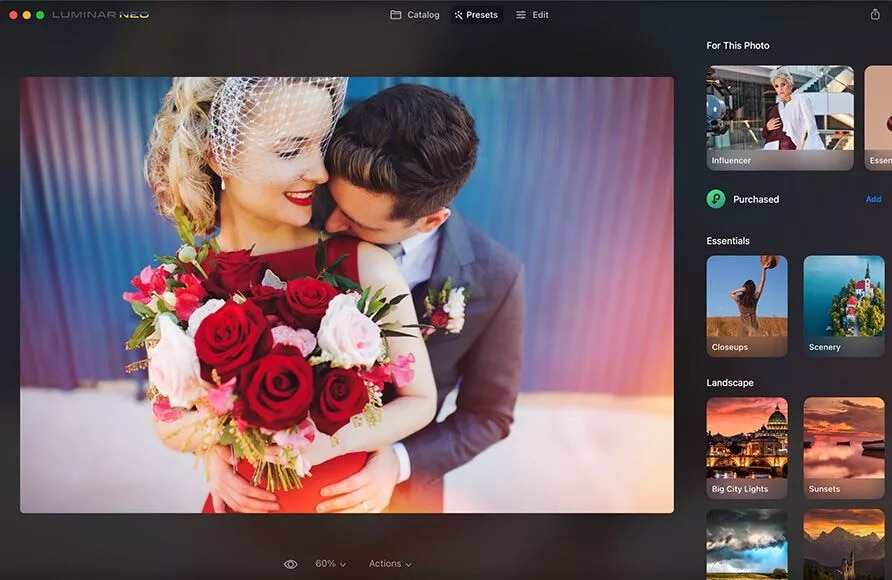
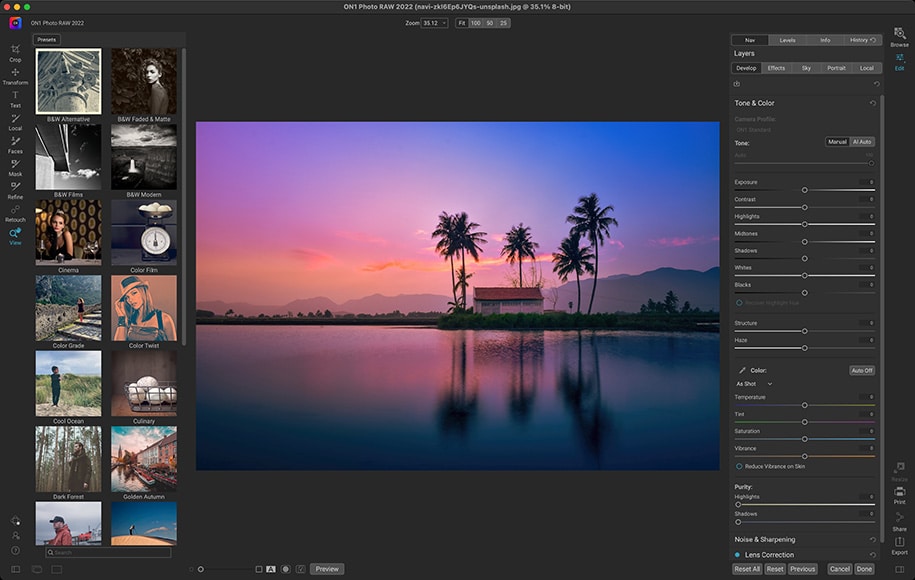
![3 Best Adobe Lightroom Alternatives in 2024 [User Tested]](https://technology-gadgets.com/wp-content/uploads/thumbs_dir/nikon_z_35mm_f1_4_review-quwqu2tgqfsvm4hqcglzp9ewtjxo97tt8vu05ug8cc.jpg)
![3 Best Adobe Lightroom Alternatives in 2024 [User Tested]](https://technology-gadgets.com/wp-content/uploads/thumbs_dir/xioami-14tpro-feat-qv08ayhebv2igfh0xwo2ifxpkkt6w1iyxd1rfp8858.jpg)



